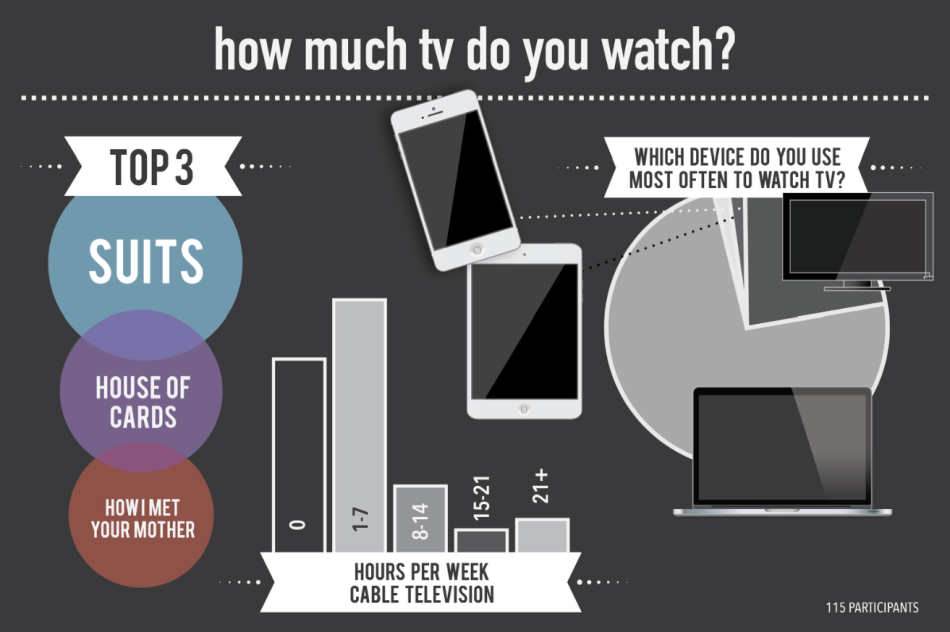Comparing Television Platforms
Netflix:
With over 40 million global streaming subscribers, Netflix has dominated the on-demand streaming market for the past few years.
The monthly membership of eight dollars gives customers access to thousands of tv shows to stream instantly, while an additional eight dollars a month gives access to the full digital library and a DVD delivery subscription. Many students like Netflix for its wide selection of content and user-friendly features.
“I use it on multiple devices like my phone, my iPad, and my television. Also, the streaming is very fast,” Areej Hasan (12) said.
In 2011, Netflix began acquiring original content to stream on its website. In 2013, the company debuted the first “Netflix Original” series, House of Cards. The widely-popular series, which became the first web-only show to earn a Primetime Emmy award last year, paved the path for other “Netflix Original” series like Orange is the New Black and a reboot of the critically-acclaimed Fox comedy Arrested Development.
“The series are amazing because you don’t have to wait for advertisements, and there are no cliffhangers so it feels a lot more satisfying. They pay a lot of attention to the cinematography and the plot writing,” Brian Tuan (12) said.
Because “Netflix Original” series are released in their entirety all at one time, the company has been able to harness the growing shift towards television consumption through binge-watching, where viewers watch upwards of two episodes at a time in one sitting.
“I use Netflix because it has most of the shows that I watch, and it’s the best platform to binge-watch shows on,” Karina Patel (9) said.
Hulu:
Hulu offers a free version of its video streaming service, with an option to upgrade to Hulu Plus for eight dollars a month. The free version of Hulu runs on advertisements, while Hulu Plus airs minimal commercials and has licensing deals to provide content from Fox, NBC, Disney, MTV, and other cable channels.
“I watch dramas on Hulu, because other websites have a lot more advertisements. Hulu has a tolerable amount of advertisements,” Kristen Ko (10) said.
Hulu also differentiates itself from its competitors by adding new episodes soon after they air on television. This gives its users access to more fresh content.
“I like Hulu because it has more recent episodes than Netflix does,” Mishi Vachev (11) said.
Amazon Prime Instant Video:
Amazon’s instant video membership operates through the Amazon Prime program, which offers free two-day shipping and free Kindle books for a $79 yearly membership. Because Amazon Prime’s video service has only been around since 2011, its selection is not as wide as other streaming sites. Most students use Amazon Prime’s video services because they had already purchased the membership for its free two-day shipping feature.
“It’s really convenient because it comes with the Prime subscription. I think they’re inferior to Netflix because their selection is not as great, but they do have a lot of British television shows that aren’t on Netflix,” Gerry Zhou (12) said.
In February, Amazon followed in Netflix’s footsteps to provide original content by releasing a Pilot Series program on its website. Because it’s a relatively new concept, it has yet to gain a significant amount of press or visibility.
“I’ve heard about [the Pilot series], but I haven’t watched any of them,” Ashir Bansal (11) said.
The program allows users to vote on which shows become full-length series based on pilot episodes of each show. The selection ranged from kids shows to comedies and dramas.
In comparison to Netflix, the Amazon Prime instant video service is more convenient because it comes with the 2-day free shipping membership. However, Netflix still provides the widest selection of content and most user-friendly features, but it does not give users access to the recently aired episodes that Hulu does.
This piece was originally published in the pages of the Winged Post on Mar. 12, 2014.

Shay Lari-Hosain (12) is the Editor-in-Chief and co-founder of Wingspan Magazine. Shay has interviewed 2013 Nobel Laureates, authors like Khaled Hosseini...


















![“[Building nerf blasters] became this outlet of creativity for me that hasn't been matched by anything else. The process [of] making a build complete to your desire is such a painstakingly difficult process, but I've had to learn from [the skills needed from] soldering to proper painting. There's so many different options for everything, if you think about it, it exists. The best part is [that] if it doesn't exist, you can build it yourself," Ishaan Parate said.](https://harkeraquila.com/wp-content/uploads/2022/08/DSC_8149-900x604.jpg)




![“When I came into high school, I was ready to be a follower. But DECA was a game changer for me. It helped me overcome my fear of public speaking, and it's played such a major role in who I've become today. To be able to successfully lead a chapter of 150 students, an officer team and be one of the upperclassmen I once really admired is something I'm [really] proud of,” Anvitha Tummala ('21) said.](https://harkeraquila.com/wp-content/uploads/2021/07/Screen-Shot-2021-07-25-at-9.50.05-AM-900x594.png)







![“I think getting up in the morning and having a sense of purpose [is exciting]. I think without a certain amount of drive, life is kind of obsolete and mundane, and I think having that every single day is what makes each day unique and kind of makes life exciting,” Neymika Jain (12) said.](https://harkeraquila.com/wp-content/uploads/2017/06/Screen-Shot-2017-06-03-at-4.54.16-PM.png)








![“My slogan is ‘slow feet, don’t eat, and I’m hungry.’ You need to run fast to get where you are–you aren't going to get those championships if you aren't fast,” Angel Cervantes (12) said. “I want to do well in school on my tests and in track and win championships for my team. I live by that, [and] I can do that anywhere: in the classroom or on the field.”](https://harkeraquila.com/wp-content/uploads/2018/06/DSC5146-900x601.jpg)
![“[Volleyball has] taught me how to fall correctly, and another thing it taught is that you don’t have to be the best at something to be good at it. If you just hit the ball in a smart way, then it still scores points and you’re good at it. You could be a background player and still make a much bigger impact on the team than you would think,” Anya Gert (’20) said.](https://harkeraquila.com/wp-content/uploads/2020/06/AnnaGert_JinTuan_HoHPhotoEdited-600x900.jpeg)

![“I'm not nearly there yet, but [my confidence has] definitely been getting better since I was pretty shy and timid coming into Harker my freshman year. I know that there's a lot of people that are really confident in what they do, and I really admire them. Everyone's so driven and that has really pushed me to kind of try to find my own place in high school and be more confident,” Alyssa Huang (’20) said.](https://harkeraquila.com/wp-content/uploads/2020/06/AlyssaHuang_EmilyChen_HoHPhoto-900x749.jpeg)



